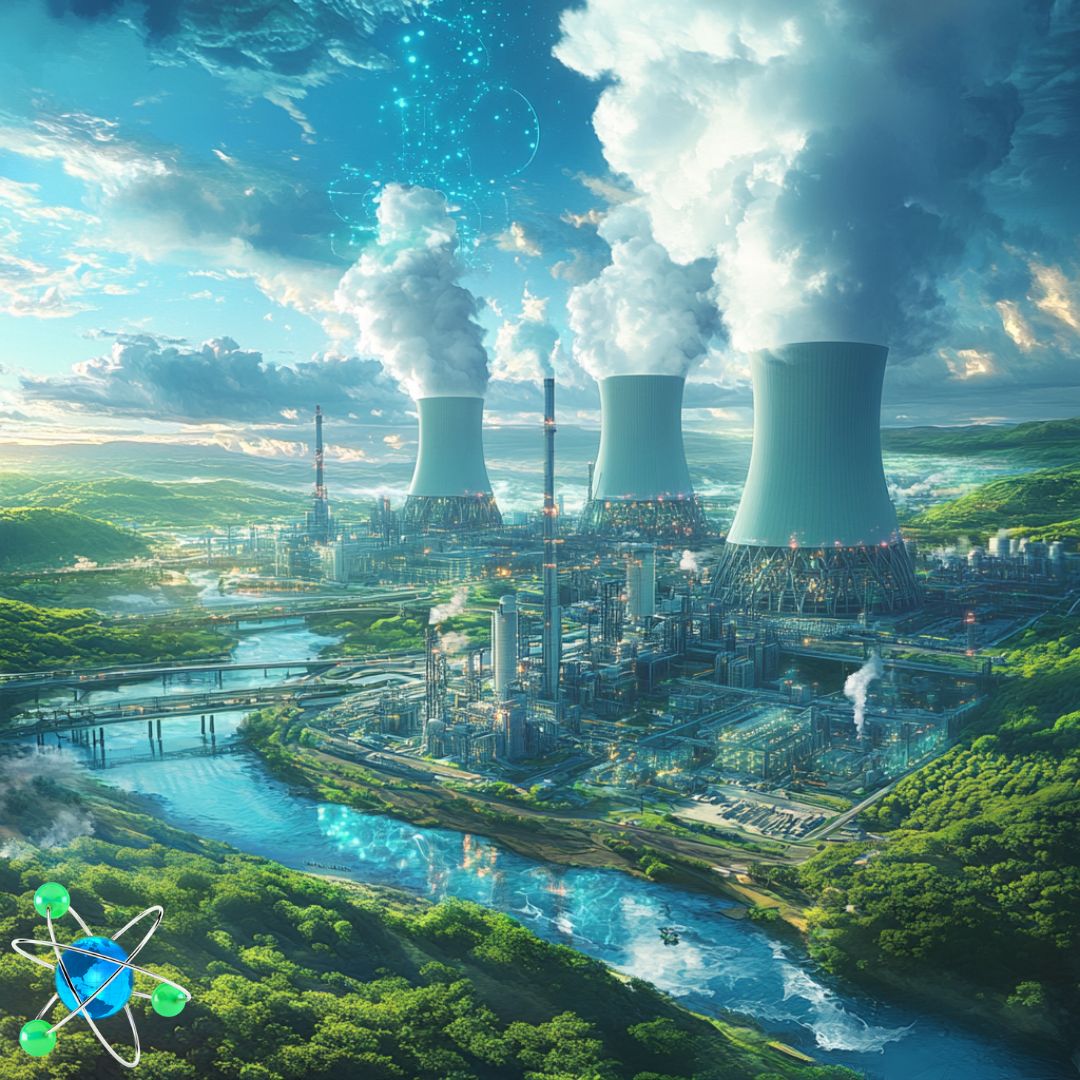
- The Biden administration has announced a plan to triple US nuclear capacity by 2050, targeting an additional 200 GW through new reactors, plant upgrades, and restarts, with an interim goal of 35 GW by 2035.
- This strategy addresses previous obstacles, including skilled labor shortages, domestic fuel supply issues, and regulatory challenges, with bipartisan support and recent legislative backing to accelerate nuclear development.
- The roadmap emphasizes nuclear’s role in meeting growing clean energy demands, positioning the US as a leader in nuclear technology, and providing stable, round-the-clock power alongside renewables to support energy-intensive industries.
The Biden administration has unveiled an ambitious strategy to triple the United States’ nuclear power capacity by 2050, aiming to meet the growing demand for reliable, carbon-free energy. This new roadmap sets out a plan to deploy an additional 200 gigawatts (GW) of nuclear capacity, which would include constructing new reactors, restarting dormant plants, and upgrading existing facilities. In the short term, the White House seeks to have 35 GW of new nuclear capacity in operation by the mid-2030s, helping to establish a foundation for continued expansion.
Ali Zaidi, the White House National Climate Adviser, emphasized that the US has developed the necessary industrial capacity and regulatory experience over recent years to make this vision feasible. According to Zaidi, the administration has been actively working to remove key obstacles that have historically hindered nuclear expansion, such as limited skilled labor, restricted domestic fuel supply, and regulatory bottlenecks. “We’ve taken out a lot of the impediments that have stood in the way of going big on this source of carbon-free electricity,” Zaidi stated in an interview.
This ambitious nuclear agenda, which enjoys bipartisan support, is expected to carry forward under the upcoming administration of President-elect Donald Trump. During his campaign, Trump advocated for new nuclear reactors as a means to power energy-intensive industries, including data centers and manufacturing facilities. Congress has also shown strong support for nuclear energy, evidenced by the recent passage of a law that grants the US Nuclear Regulatory Commission additional tools to regulate advanced reactors, license new fuel types, and oversee innovations in manufacturing that could accelerate and reduce the costs of reactor construction.
Currently, nuclear energy accounts for roughly 100 GW of the US’s installed power capacity. Yet, as global electricity demand surges — especially from industries reliant on energy-intensive data processing, such as artificial intelligence — the need for new, low-emission power sources has grown urgent. Many companies are now turning to nuclear energy to meet these demands. For example, Microsoft recently signed an agreement to purchase power from Pennsylvania’s revived Three Mile Island nuclear plant. Other prominent technology giants like Google and Amazon, as well as notable investors like Ken Griffin, have also voiced interest in nuclear projects.
The Biden administration’s nuclear roadmap comes as global leaders gather for COP29 in Azerbaijan, facing pressure to accelerate their carbon reduction targets. At last year’s United Nations climate conference, the US and over two dozen other countries committed to a collective goal of tripling global nuclear capacity by 2050. With this new plan, the US aims to lead by example, demonstrating that nuclear energy can play a critical role in a sustainable energy future.
The administration’s framework outlines several critical steps for nuclear expansion. These include accelerating federal licensing for large reactor designs, ensuring long-term clarity on tax incentives, and exploring the feasibility of adding new reactors at existing nuclear sites. The roadmap also suggests evaluating opportunities to deploy micro-reactors at Department of Defense facilities, underscoring the potential for nuclear technology to support both civilian and national security needs.
In reasserting the US’s leadership in nuclear technology, the framework highlights that international partners often look for new reactor technologies to be demonstrated in the supplier country before committing to adoption. As such, establishing a strong domestic nuclear industry is key to both meeting the nation’s energy demands and positioning the US as a competitive supplier of clean energy technology on the global stage.
As countries re-evaluate nuclear power in light of climate goals and energy security needs, the Biden administration’s roadmap is a clear signal of support for nuclear as a viable path to a carbon-neutral future. The plan to rebuild US nuclear capacity and restore its status as a leader in nuclear innovation could provide the necessary momentum for a new era of nuclear energy that complements renewable sources and provides a reliable backbone for the nation’s power grid.

0 Comments